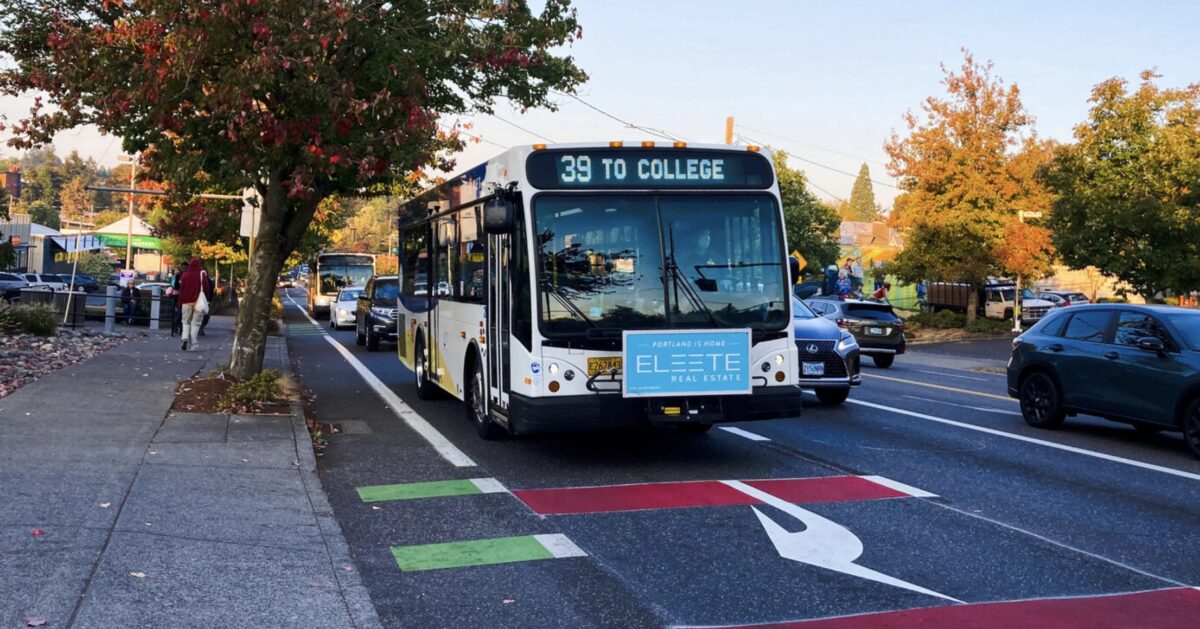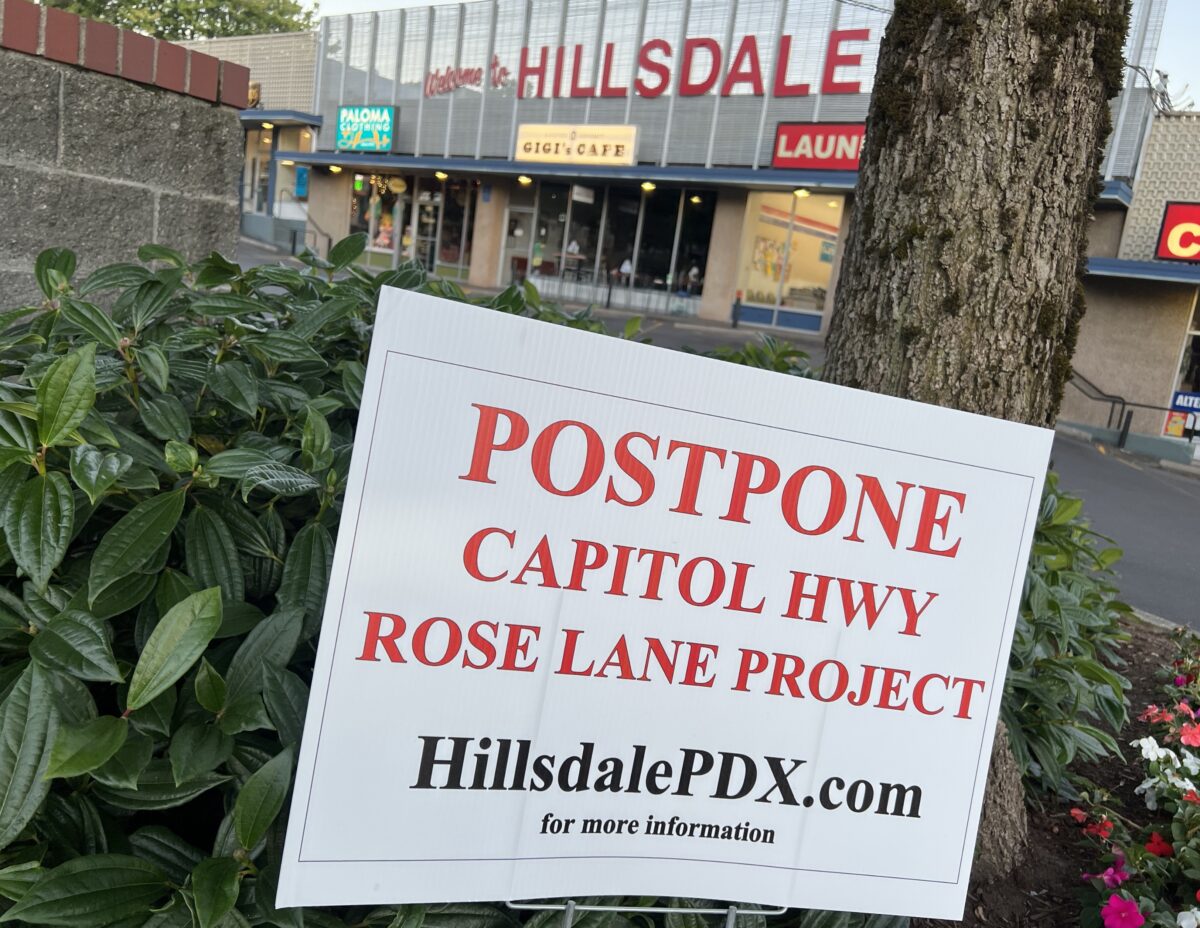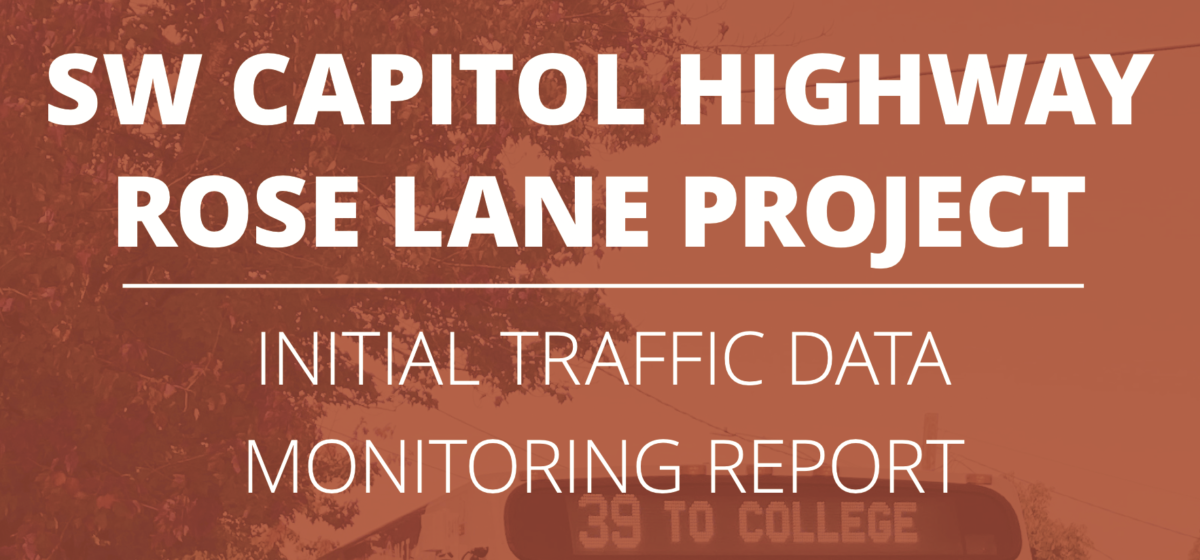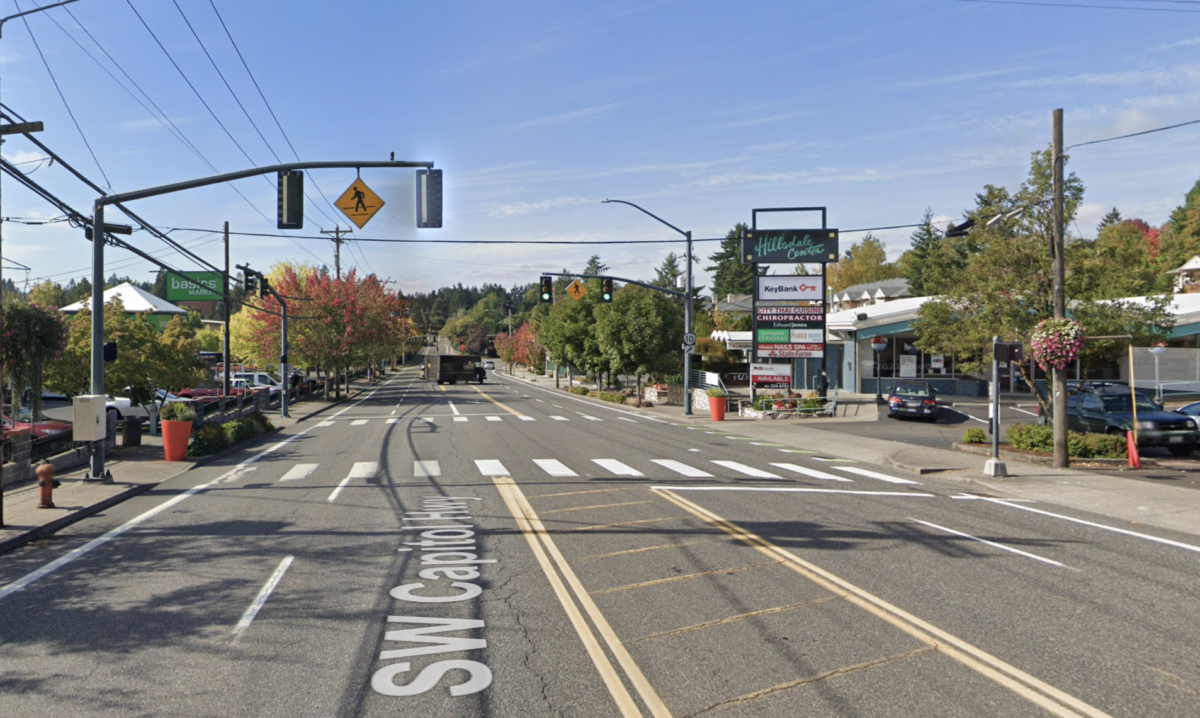 Looking west on SW Capitol Hwy in Hillsdale Shopping Center. (Photo: PBOT)
Looking west on SW Capitol Hwy in Hillsdale Shopping Center. (Photo: PBOT)When the Portland Bureau of Transportation announced a plan to construct a ‘Rose Lane’ through the Hillsdale Shopping Center on SW Capitol Highway, the news wasn’t universally well-received. In fact, there was so much pushback from some Hillsdale community members that several organizations — the Hillsdale Business and Professional Association (HBPA), the Hillsdale Neighborhood Association (HNA), Southwest Trails PDX (SWT) and Southwest Neighborhoods Incorporated — launched a petition to delay the project.
Despite the backlash PBOT pushed ahead and constructed the bus-and-turn (BAT) only lane on a one-mile stretch of SW Capitol Hwy from Barbur Boulevard to Bertha Court last fall. So, now that the paint on the Rose Lane has been dry for some months, how’s Hillsdale faring? According to a new PBOT traffic data monitoring report, the impact doesn’t appear to be as dramatic as some people feared.
 A sign in Hillsdale demonstrating the pushback against the Rose Lane. (Photo: Jonathan Maus/BikePortland)
A sign in Hillsdale demonstrating the pushback against the Rose Lane. (Photo: Jonathan Maus/BikePortland)
Hillsdale business owners and residents had a few concerns about this project. For one, some worried that the BAT lane would impact business access, and that its implementation would back up traffic in the area to such an extent that their shops would shut down “in a matter of months” (per the petition against the Rose Lane). People were also worried that the new traffic operations on Capitol Hwy would cause excessive traffic routing onto local neighborhood streets, and they argued that PBOT has made overstated assertions about how beneficial the Rose Lane would be for transit trip times on this corridor.
PBOT’s new report doesn’t comment on how well these local businesses are faring, but in December, BikePortland’s Lisa Caballero reported that Hillsdale businesses seemed to be doing quite well despite some claims to the contrary. The report does say that PBOT has “observed longer traffic queues, particularly during the PM Peak Hour westbound on SW Capitol Highway from SW Barbur to SW Sunset.” To remedy this, the bureau will be “advancing signal modifications to help mitigate this queuing.”
The report also states that local service streets only saw a minor uptick in both daily and peak hour vehicle volumes.
“Daily traffic volumes decreased on all monitored local streets except three, and those increases ranged between 25 and 31 additional vehicles per day…For local streets with increases of Peak Hour vehicle volumes, increases ranged between 3 and 14 additional vehicles during Peak Hours,” the report states. “While these changes are within expected standard fluctuations in daily volumes, we understand that people living on these streets may notice and feel a difference.”
Here are other takeaways from the report:
There have been no significant changes in speeding, when comparing 85th percentile speeds on arterial streets or local streets. We have not observed changes to vehicle volumes or other patterns on arterials that trigger mitigation, but we will continue to monitor, collect data, and gather feedback from community stakeholders. While daily vehicle volumes on arterials were lower, all decreases are within expected seasonal fluctuations in daily volumes. Daily traffic volumes decreased on all monitored major streets, with total daily volumes decreasing between 2 percent and 12 percent. Lower traffic volumes on major streets are typical during winter months, and all observed decreases are below or within expected seasonal adjustment factors ranging from 10 percent to 15 percent. All local streets remain well below our preferred threshold of 1,000 vehicles per day, including streets that are not designated Neighborhood GreenwaysPBOT says via the report they’ll work to reduce congestion with tools like signal timing and adjustments to lane markings. After these mitigation measures are completed, staff will go out for another round of data collection and release another report this summer.
The scope of this report didn’t include data about if the BAT lane is working to make transit trips faster — the ostensible purpose of the new bus lanes. The PBOT press release about the report states that “this project was designed to help buses bypass congestion on SW Capitol Highway, and it is expected to support bus speed and reliability as travel activity continues to grow into the future.” People who ride TriMet bus lines 39, 44, 45, 54, 56, 61, and 64 are all impacted by this project, but it’s unclear from the report if their travel times have been reduced.
When a project sets out to make non-car transportation faster, easier or more accessible, there may be some trade-offs for people driving cars, at least in the short-term. It would stand to reason that this is actually one of the main points of a project like this one: to encourage people to rethink their choice to drive single-occupancy vehicles.
You can read the full report here (PDF).

Taylor has been BikePortland’s staff writer since November 2021. She has also written for Street Roots and Eugene Weekly. Contact her at This email address is being protected from spambots. You need JavaScript enabled to view it.



